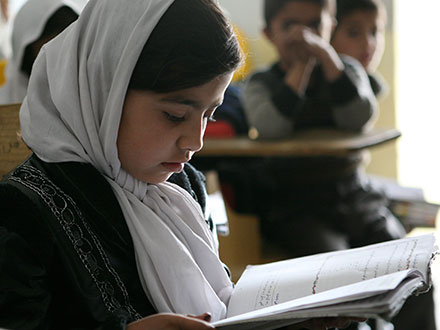The Psychology of Terrorism: A Note on Trauma
by Orla Lynch
Terrorism is complex, terrorism is political, terrorism is emotive; terrorism is what is called a wicked problem. A wicked problem is where there are complex moving parts to an issue, where there are no ‘direct relationships’ between cause and effect, and where there is equifinality.
Equifinality means that there are lots of different ways for an individual to get to a specific point; in our case, this means there are lots of different ways (and whys) an individual can end up involved in terrorism (Bouhana, 2019).
In our efforts to come to terms with and understand terrorism, despite the complexity of terrorism, we often simplify the phenomenon beyond recognition. We depict it in binary terms – good versus bad, us versus them; groups are imagined to have clearly delineated boundaries and terrorist actors are presumed to share mono-dimensional roles (for example we talk about the bombmaker in the same way we talk about those who carry out punishment beatings). However, we must repeatedly remind ourselves that processes underpinning the choice to engage in terrorist violence are undoubtedly some of the most complex social and psychological issues our society is currently facing; terrorism is not just about racism, or conspiracy or religion, it is a combination of biological, psychological, social, political, and ideological factors. These factors come together in a myriad of ways leading to involvement in the violence (and non-violence) that is terrorism.
Each researcher or practitioner has their own vested interest in how they think about the problem of terrorism. As a psychologist, I naturally see terrorism as a significant psychological problem. However, regardless of one’s discipline, multiple frameworks are necessary for understanding and conceptualizing serious social problems. This does not mean that any one approach should dominate the others, but that we need to find a way to integrate perspectives in-order to create a holistic understanding and conceptualization of the causes of terrorism.
Psychology has had a lot to say about terrorism, but not as much as we might expect. Given the dominance of political interpretations of terrorism both in practice, politics, and academia, there has been a relative dearth in the contribution made by psychological science. In addition to the issue of framing terrorism as a political problem, there are other reasons psychology has not contributed as it might to our understanding of the phenomenon of terrorism. It turns out we have been asking the wrong questions.
Horgan (2017), a psychologist and terrorism researcher, talks about the big bang questions of terrorism; he refers to the issue of who becomes a terrorist and points out that this has long been the focus of psychological research in the field. This tells us a lot about what we see as the problem of terrorism (not the definition because that is something different). If we think about crime and criminality, we have long moved away from the personogenic perspective whereby we try to understand the type of individual who engages in criminal activity; instead, with a look at the context, the environment, society, policing, etc. However, in the case of terrorism, personogenic interpretations have dominated our analysis; but asking who, is less relevant than asking how! How someone gets involved in terrorism sheds light on their interpersonal relationships, their life opportunities, their life history, their family history, their ideological position, their political beliefs and opportunities, their socio-economic status, etc. Asking how means we consider the individual in context and recognize that this context is personal, local, national, and global.
One specific area of psychological research that I am interested in that has long been a part of the narrative around victims of terrorism and political violence is that of trauma. There is a substantial body of work that examines the impact of terrorism on individual victims, survivors, their families, and society more generally. In the aftermath of 9/11, there was substantial work carried out on the impact of large scale terrorist attacks on populations who experienced the violence, as well as those who witnessed the violence on television. This research pointed out that even in cases where individuals did not directly experience the attack, they experienced symptoms of post-traumatic-stress-disorder (PTSD) (Neria, DeGrande, and Adams, 2011). This tells us a lot about the impact of terrorism on a range of audiences, particularly the psychological impact of trauma beyond the immediate victims and their families. Despite the broad range of research conducted on trauma and terrorism, one issue that has not been dealt with in the literature is the issue of trauma and the perpetrator.
Because terrorism is a pejorative term, and because terrorist actors, unlike the perpetrators of ordinary crimes, have mainly had their actions explained by reference to personogenic factors, and because on the whole, there is no redemptive script for those who have engaged in terrorism (Maruna, 2001), the terrorist actor is widely seen as a social pariah, the folk devil of our time. This can lead to moral objections to efforts to understand these individuals and certainly an unwillingness to be seen to help individuals who have in many instances been involved in causing significant harm to others. There is however a shift in how we think about the perpetrators of terrorism and, in recent years, there has been a recognition of the need for intervention with those convicted of terrorism and terrorism related offences prior to release from prison, or in some cases in lieu of prison. Intervention in these cases is constructed not as a process to assist the individual, but as a process to prevent further terrorist violence. Intervention can take many forms, but it is widely referred to as CVE- countering violent extremism (Williams, 2020). Most CVE initiatives involve psychological intervention, ideological support, family therapy, educational counselling, social welfare support, and community integration options. At the individual psychological level, trauma is a significant issue.

In the case of terrorism, the mental health of the perpetrator has long been debated, however, the focus was not on an individual’s mental health status for the purpose of intervention to support or alleviate the symptoms for the perpetrator, but as a means of understanding why an individual became involved in terrorism in the first place. In effect, this approach existed as an effort to try and understand if there was some causative relationship between mental ill health and terrorism.
To date, the literature that exists on mental ill health and terrorism has reached consensus that there is no simple direct relationship between the decision to get involved in terrorism and mental ill health (Corner, Gill and Mason, 2016). There is however a recognition that in a minority of cases, mental ill health has, like other personogenic and situational factors, a role to play in how we understand one’s involvement in terrorism.
In the case of terrorism research, the focus on mental ill was based around determining if the individual had a clinical condition prior to involvement in terrorism. However, an equally valid question, especially relevant given the increasing role of CVE initiatives in seeking to understand and prevent involvement in terrorism, is if mental ill health emerges as a result of engagement in terrorism. We know, for example, that membership of a street gang presents a substantial risk for psychological harm (Wood and Dennard, 2017). However, other research from social psychology points out that groups (e.g. a terrorist group) can have a positive effect on an individual’s mental health. There are other confounding variables to consider, especially for individual members of a terrorist group who engage in violence including the nature of violence used, the type of victim, and incidence of violence used.
We do know from research on police and members of the military and criminological research with those convicted of violent offences, that there is a psychological cost to the perpetrator who engages in violence; harming or killing another person leads to an increased risk of developing a psychiatric condition. Research on police who killed or injured someone whilst on duty shows a significant likelihood of the emergence of PTSD (post traumatic stress disorder) symptoms (Komarovskaya, Maguen, McCaslin et al, 2011), research on members of the military show similar findings (Grossman, 2014). Importantly both refer to the impact of the context of the violence and speak of degrees of trauma – for example the killing of non-combatants, the injuring of women and children, and a lack of social support in the aftermath of the violence all compound the experience of trauma. This of course has implications on how we think about interventions with the perpetrators of terrorism after the fact, but it should also be part of the debate on mental health and terrorism more broadly. For example, research that examined the mental health of individuals who participated in the Rwandan genocide pointed out that perpetrators exhibited a high degree of psychiatric morbidity, particularly PTSD and related disorders as well as depression after the fact (Schaal, Weierstall, Dusingizemungu and Elbert, 2012). Interestingly, this article had a large female perpetrator sample, which is rare, and the findings demonstrated that female perpetrators were equally likely (but not more so) to demonstrate psychiatric symptoms, however, the severity of the trauma for these women was dose dependent (i.e. the more trauma, the more severe the symptoms). Importantly, given the likelihood that women would experience additional trauma during the conflict (e.g. sexual violence) this increased their trauma related symptomology.
Of relevance for terrorism deradicalization and disengagement programmes, this study further demonstrated that a positive attitude towards reconciliation with the out-group was a mental ill-health risk factor for former perpetrators. What this means is that while reconciliation may be good for society, it may have negative psychological consequences, or have psychological costs for the perpetrator (Schaal, Weierstall, Dusingizemungu and Elbert, 2012). Ultimately this means that the psychological well-being of the individual perpetrator is not necessarily aligned with community efforts at peace and reconciliation and this should be taken into account in any intervention initiatives with offenders. A colleague, Dr Carmel Joyce and I, hosted a data collection workshop in the Europa Hotel Belfast in 2014 as part of an EU funded research project which was attended by a large group of former perpetrators of terrorism, and at this event one man spoke freely about this issue. He explained that in order to live with the consequences of his actions he had to protect himself (psychologically). He spoke of the trauma his choices caused, and how he had suffered significant mental health issues in the aftermath of the conflict. In this case, protecting himself involved not engaging in any reconciliation type work, nor engaging publicly around the peace process. He felt that his ability to cope with his trauma and society’s expectations of him as a former-perpetrator were not compatible. In this case, lessons from other domains, particularly disarmament, demobilization, and reintegration (DDR), and restorative justice/practice may have significant input here and should be considered.
Understanding terrorism as a psychological phenomenon involves understanding the experiences of all parties to the violence; this includes both perpetrators and victims. Mental ill health is relevant to our understanding of terrorism, particularly to how we think about involvement in terrorism and the acute and long-term impact of terrorism on all parties involved. Trauma plays a significant role in the story of terrorism, from adverse childhood experiences to grievance, to retribution to regret. The transgenerational impact of trauma and the victim-perpetrator cycle have serious implications for the sustainability of terrorism and political violence, and they are currently a research blind spot. Trauma is both a personal and a social experience and its manifestation in the individual can tell us a lot about the process of involvement in terrorism and potentially the pathways out of terrorism.
References
[1] Bouhana, N. (2019) The Moral Ecology of Extremism. A Systematic Perspective. Prepared for the UK Commission for Countering Extremism Paper Series. Available online at https://assets.publishing.service.gov.uk/government/uploads/system/uploads/attachment_data/file/834354/Bouhana-The-moral-ecology-of-extremism.pdf Accessed January 1st 2021.
[2] Corner, E., Gill, P. and Mason, O. (2016) Mental health disorders and the terrorist. Studies in Conflict and Terrorism, vol 39 (6), pp 560-568
[3] Grossman, D. (2010) On Killing. The Psychological Cost of Learning to Kill in War and Society. New York; Little, Brown and Company.
[4]Komarovskaya, I., Maguen, S. , McCaslin, S. E., Metzler, T.J. Madan, A, Brown, A.D., Galatzer-Levy, I.R., Henn-Haase, C. & Marmar, C.R. (2011) The impact of killing and injuring others on mental health symptoms among police officers. Journal of Psychiatric Research, vol 45 (10) , pp 1132-1336.
[5] Horgan, J. (2017) Psychology of terrorism: Introduction to the special issue. American Psychologist, vol.72 (3), pp 199-204.
[6] Maruna, S. (2001) Making Good. How ex-convicts reform and rebuild their lives. NY; American Psychological Association.
[7] Neria, Y., DeGrande, L. and Adams, B. (2011). Posttraumatic Stress Disorder Following the September 11, 2001, Terrorist Attacks. American Psychologist, vol. 66 (6), pp 429-446.
[8] Schaal, S., Weierstall, R., Dusingizemungu, J.P. & Elbert, T. (2012) Mental health 15 years after the killings in Rwanda. Imprisoned perpetrators of the genocide against the Tutsi versus a community Sample of survivors. Journal of Traumatic Stress, vol. 25 pp 446-453.
[9] Williams , M. (2020) Preventing and Countering Violent Extremism. Designing and Evaluating Evidence-Based Programs. London; Routledge.
[10] Wood, J. & Dennard, S. (2017) Gang Membership: Links to Violence Exposure, Paranoia, PTSD, Anxiety, and Forced Control of Behavior in Prison. Psychiatry, vol 80 (1), pp 30-41.
About Hedayah's Blog Series
Hedayah publishes a monthly blog series covering a range of different topics related to counter violent extremism (CVE). These blogs highlight the latest trends and challenges faced by the CVE world and highlight topics that receive less attention in the international CVE space with a unique perspective.
The authors of the blog posts are Hedayah’s staff, Hedayah’s Fellows, and guest experts. The opinions expressed in the blogs are their own and not representative of Hedayah. We hope that these blogs will contribute to the conversation around CVE solutions, and push forward the quest for more research and innovation in the field.










